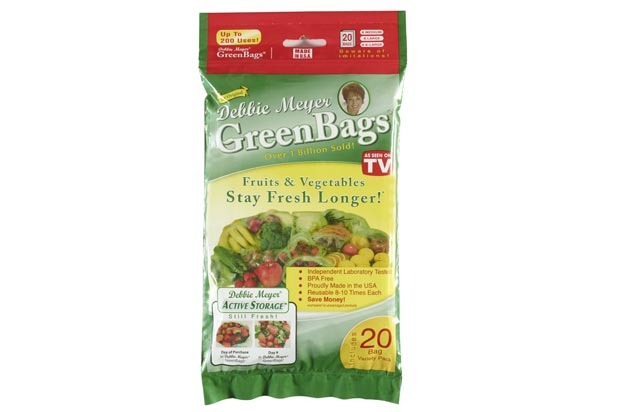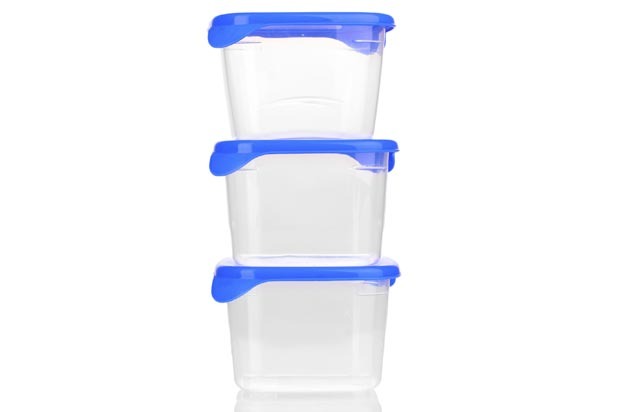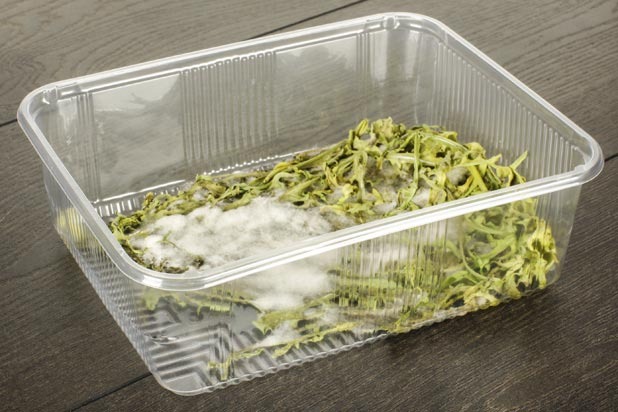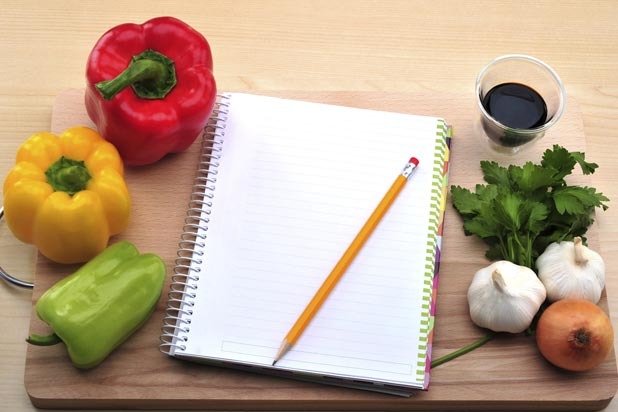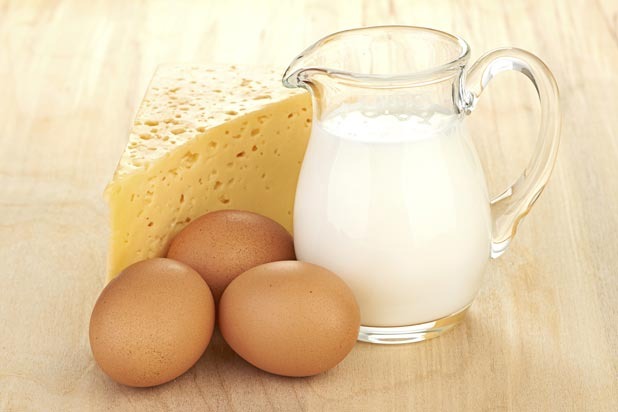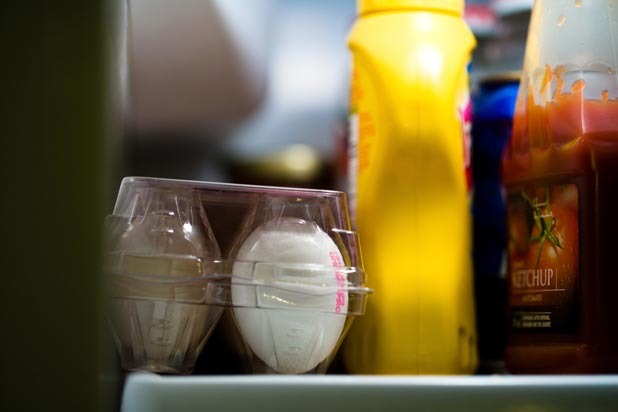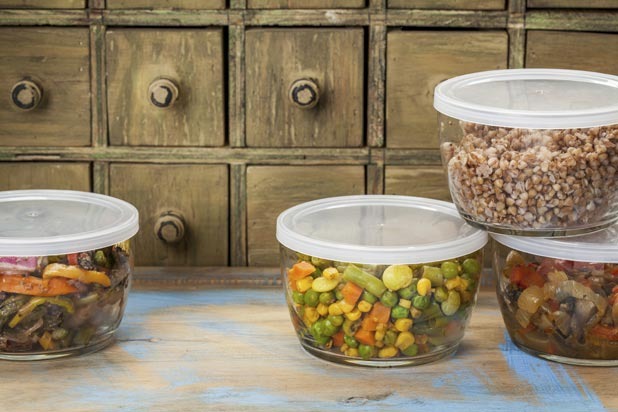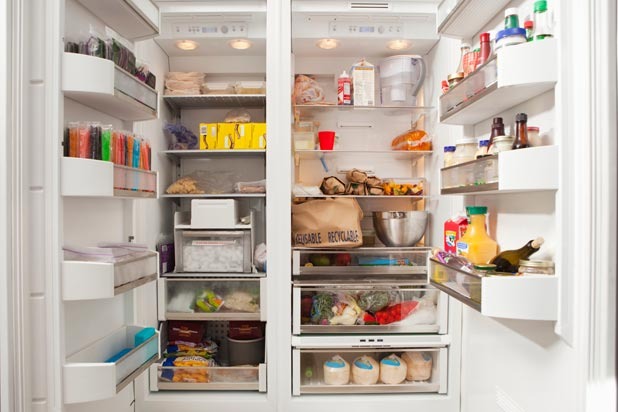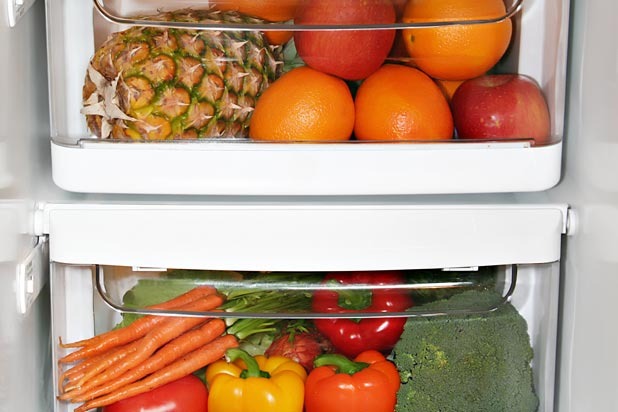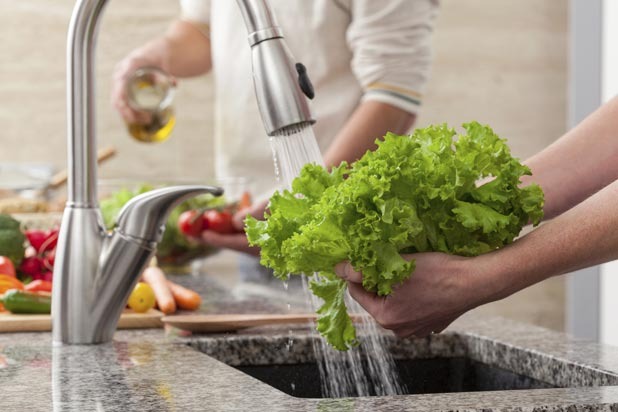How Your Fridge Can Save You Thousands Of Dollars (Slideshow)
Your fridge and freezer need to be kept at the ideal temperature in order to keep your food fresh. While most units come with a "cold, colder, coldest" setting, you will really want to invest in a fridge thermometer. The ideal fridge temperature is 34 and 40 degrees Fahrenheit, while freezers need to be kept at 0 degrees or below.
Go Green
While most "as seen on TV" products are a waste of money, those advertising green products to keep your fruit and veggies lasting longer actually work. Items like the Stay Fresh Green Containers and Green Bags contain zeolite, a mineral that absorbs ethylene gas. Ethylene gas is what helps fruit and vegetables to ripen, so reducing the amount of it will help add shelf life to produce.
Keep Everything In Square, Clear Containers
This is an especially good tip for your top shelf, which is where most of the spoilage occurs, since it is one of the warmest spots of the fridge. Pretty Tupperware is fun to look at, but not when it is holding last week's molded macaroni in it. A clear container will help remind you of what you've stored and when. Use a P-Touch label maker or marker to write your storage date on the side of the container facing out so it is easy to read. Square containers are easier to stack so you're saving space, too.
Know How Long It’s Good For
Even though you've got the temperature issue sorted out, it doesn't mean your food is protected forever. Over time, even chilled foods will spoil so it is important to know how long your food is good for. According to the USDA, raw meats, poultry, and seafood are only good for one to two days. Roasts, steaks, and chop last slightly longer from three to five days, and cooked food, or leftovers, should be tossed after three to four days. When storing your meats, rotate them so that the newest winds up on the bottom, not the top. This way, you will know what you need to use first.
Have a Prep Night
Menu planning might seem like a tedious chore, but once you've started, it becomes an easy addition to your week. First, plan your week's menu. Try to include the items that need to be used up. Like that package of chicken breast you just defrosted. Then, prep your ingredients for each one of them. For example, chop carrots once for all the week's recipes. Measure them out for each meal. Then, package them in individual baggies or reusable containers. Store the portioned out ingredients for each meal together in a larger bag with the meal name on it. Store the prepped in the order you are planning on eating them.
Group Dairy Together
Since many pairs of foods are used together, like butter and eggs, group them together in the fridge. With the exception of milk, most dairy items don't need to be extremely cold to keep, so a dairy drawer or top shelf will work best to store them. Knowing what you have of each will make it easier to shop for them, too.
Maximize Shelf Space
If it doesn't need to be kept cold, keep it out of the fridge. Unopened bottles of water, tea, soda or shelf-stable items like ketchup and mustard can be kept in the pantry and rotated into the fridge when needed. Keep a checklist on the side of the fridge door reminding you when you are down to your last item so that you can add it to your grocery list. Another good tip is to not overstuff your fridge. "Cool air must circulate to keep food from spoiling prematurely," says Kuper.
Store Leftovers Smartly
Instead of dumping your leftovers into a giant container, ration them out into individual sized portions. Then, store them in clear containers or bags with the item name and cook date on them. That way, if you are running low on cash and need to brown bag your lunch one day, it's ready. Toss leftovers after three to four days.
Do Over Your Doors
The doors are the warmest part of the fridge, so only store-bought condiments with a long shelf life, like ketchup, mustard, soy sauce, and the like, should be kept there. Store them with the expiration date facing out, so you know how long they are good for.
Keep Your Fruits and Veggies Separate
Most fridge units come with two crisper drawers. For maximum longevity, use one for fruit, the other for veggies. Fruits that give off high levels of ethylene, like peaches and apples, can prematurely ripen and spoil vegetables.
Don’t Wash Vegetables Until You are Ready to Use Them
While some TV chefs love the idea of washing all your produce the minute you get home so it can be ready to use, prewashing can actually shorten the shelf life of most veggies. Instead, don't wash anything until you are ready to use it.
